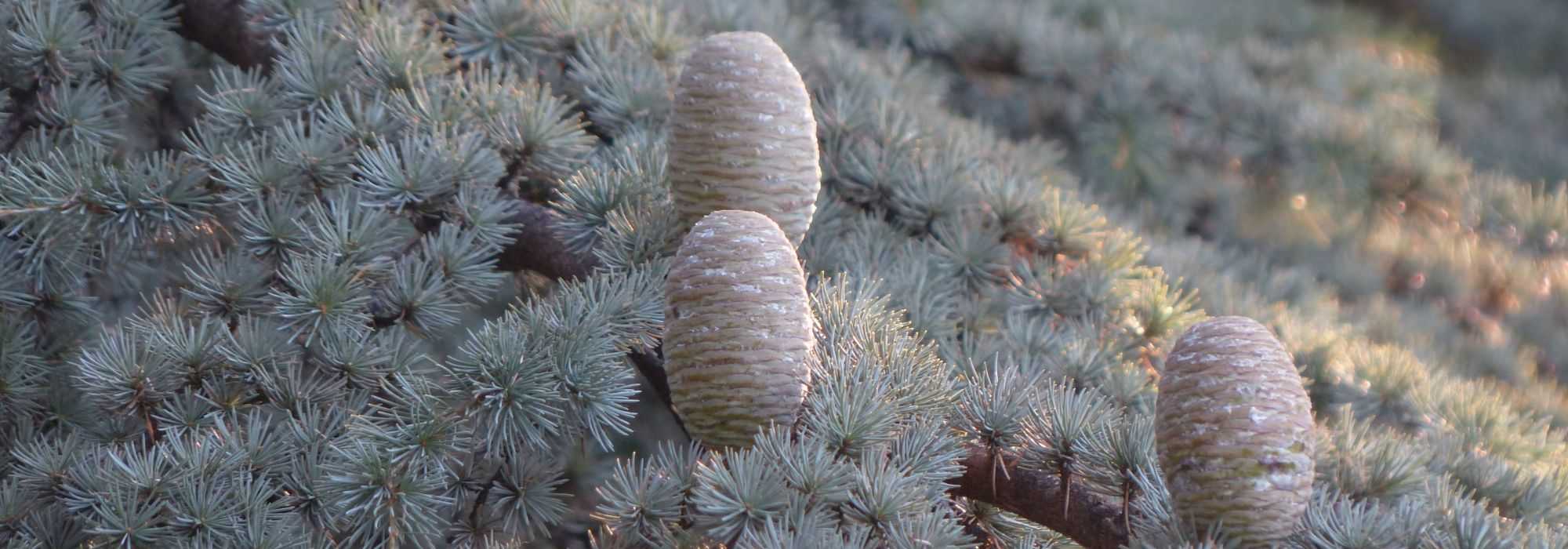
Cedar: planting, pruning and care
Contents
Cedar, in a nutshell
- Cedars are majestic conifers widely planted in parks and gardens in past centuries.
- They are characterised by a pyramidal habit becoming flat-topped with age.
- Evergreen needles, fairly short and more or less prickly, are gathered in vascular bundles on dwarf shoots and adopt various green to bluish or golden hues depending on species and cultivars.
- Himalayan cedar (Cedrus deodara) and its golden or weeping forms, preferring mild, humid climates, together with Blue Atlas cedar, are the most widely planted species.
- They are long-lived trees, not very susceptible to pollution and parasitic pests, quite resistant to drought and cold, undemanding regarding soil and climate.
A word from our expert
Genus Cedrus comprises only 3 to 4 species commonly named according to place of origin: Atlas cedar (Cedrus atlantica), Himalayan cedar (Cedrus deodara), Lebanon cedar (Cedrus libani) and Cyprus cedar (Cedrus libani subsp. brevifolia syn. Cedrus brevifolia). These resinous species, distributed from Morocco to the Himalayas, display remarkable silhouettes that are pyramidal and then evolve, except in Himalayan cedar, into a characteristic flattened habit caused by bending of the leading shoot.
In the wild, Himalayan cedar can reach 75 m, whereas it rarely exceeds 15 to 20 m in cultivation, as do other cedars such as Cedrus atlantica and Cedrus libani. Golden-foliaged forms (Cedrus deodara ‘Aurea’, ‘Kelly Gold’) are limited to 8–10 m in height with 3 m in diameter, and weeping forms (Cedrus atlantica ‘Glauca Pendula’, Cedrus deodara ‘Pendula’) range between 3 and 5 m high with a spread of 10 to 15 m!
Needless to say, planting a cedar requires careful thought, as it would be a pity to have to fell such a valuable and striking specimen after all the years required for development. As noted, cultivars with a narrow habit exist that are suited to small gardens. Also consider that crown thinning can be carried out by a tree surgeon skilled in gentle pruning. This art of pruning prevents distortion of the tree’s outline while improving wind penetration, thus reducing risk of the tree being uprooted.
These conifers are undemanding regarding soil and climate. While they grow faster in fertile, deep and cool soil, they tolerate much less favourable conditions and summer drought once established.
Description and botany
Botanical data
- Latin name Cedrus
- Family Pinaceae
- Common name Cedar
- Flowering September to November
- Height between 8 and 35 m
- Exposure sun
- Soil type any deep, well-drained soil, including calcareous; moist to dry.
- Hardiness Excellent (-15 to -20 °C)
Cedars belong to family Pinaceae, like Pines and Firs. Although several other resinous conifers quite different, such as Chamaecyparis and Thuja, are also called cedar, genus Cedrus comprises only 2 to 4 species depending on classification, occurring from Morocco to foothills of Himalaya in very localised areas. Atlas cedar or Cedrus atlantica (syn. Cedrus libani subsp. atlantica) indicates species closest to Atlantic. It grows on Atlas Mountains of Algeria and Morocco between 1,500 and 2,500 m altitude, notably on north- and west‑facing slopes. Drought in recent years and, above all, rampant deforestation have placed this timber species in danger of extinction. It was actually discovered very late, around 1838 when France created a Forestry Service in Algeria, whereas Himalayan cedar (Cedrus deodara) was known and introduced to France as early as 16th century, even if its wider distribution only began in mid-19th century. Lebanon cedar, introduced to France by Bernard Jussieu around 1734, quickly became popular as an ornamental tree and it is not uncommon to encounter specimens with 9–10 m girth in Britain and France, with heights exceeding 30 m. Native to heights near eastern Mediterranean coast (Turkey, Syria and Lebanon), it is sadly endangered in its natural range where it has become rarer than across our parks and avenues.
Himalayan cedar grows on slopes of the famous range between 1,500 and 3,300 m altitude, from Afghanistan, Pakistan, India and Kashmir to Nepal. This large temperate forest tree, associated with resinous species or with leafy species depending on altitude, prefers mild humid climates and can be sensitive here to spring frosts. It can reach 75 m in its natural range.
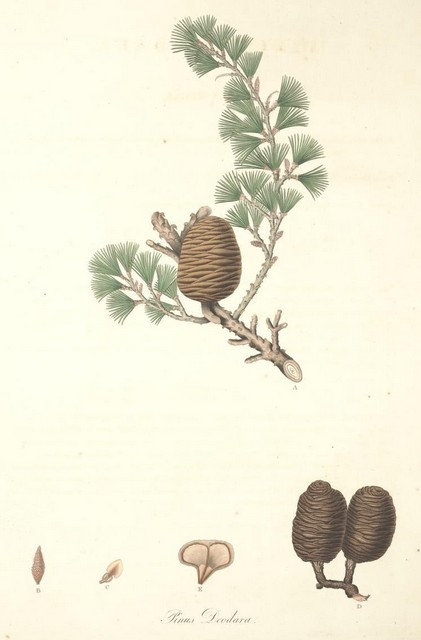
Cedrus deodara – botanical illustration
Name Kedros in ancient Greek designated both juniper and cedar. In 18th century this tree was successively placed in genera Larix (larch), Juniperus (juniper) and Pinus (pine) by Carl von Linné before genus Cedrus was established in 1841.
These trees reach venerable ages of several centuries or even several thousand years as shown by some Lebanon cedar specimens. In Europe their sizes seldom exceed 20–30 m height. Stiff ascending branches of young Atlas and Lebanon cedars spread with age while leading shoot bends, resulting in a very characteristic flat habit. Height growth can be alarming but patience is needed: about thirty years for silhouette to flatten and avoid cutting leading shoot. Cedrus libani ‘Nana’ has very slow growth and a prostrate habit suitable for rockeries while Turkish subspecies stenocoma is almost columnar.
Cedrus deodara retains a pyramidal habit with slightly weeping branches and shows needles softer and longer than other cedars, measuring 3.5–5 cm. Bluish colour of needles is typical of Cedrus atlantica forma glauca, also called blue cedar. This form, much used in gardens, has a slightly more supple habit than type with dark‑green needles. Lebanon cedar has needles of intermediate length measuring 3–3.5 cm, then comes Atlas cedar with length between 2 and 2.6 cm, followed by Cyprus cedar with average 1.2 cm, as its Latin name brevifolia indicates, meaning “short‑leafed”. Young shoots are downy, except in Cedrus libani which has almost glabrous shoots. Bark, first grey and smooth on young trees, becomes more fissured and scaly with years.
Evergreen leaves are arranged in rosettes of 10 to 60 needles on dwarf shoots and singly along long shoots. They persist 3 to 6 years before falling. Tree produces resin giving that pleasant scent which also soaks into wood reputedly very hard and rot‑proof. Wood is used to scent and repel insects in wardrobes.
Cedar begins to fruit around age 40. Male aments form small yellowish catkins 3–6 cm long at branch tips in early summer that shed pollen in autumn. Female conelets appear at top of tree in autumn and mature over 2–3 years.
Cedar cones green‑purple then brown have smooth ovoid shape and stand erect on twig. They measure under 8 cm long in Cedrus atlantica, 10 cm with rounded apex in Cedrus deodara, 9–15 cm with flat or concave apex in Cedrus libani, which therefore bears largest cones. At ripeness thin scales separate and disintegrate in wind, releasing triangular brown seeds 5–10 mm.

Fabulous blue cedar: male aments, bluish needles and female cone
Cedar wood, prized for durability, is used in shipbuilding, joinery, cabinet‑making, crafts and as firewood. It was used to make doors of Solomon’s Temple and has strong symbolic value in three monotheistic religions. Essential oil extracted from wood and needles and its resin possess medicinal virtues: antiseptic, diuretic and sudorific.
There are remarkable Atlas cedar stands in Luberon, Ventoux, Aigoual and Lauragais.
Read also
Major diseases and pests of conifersMain varieties of cedar
Length of needles as well as shape and size of cones are the main criteria for determining the three recognised species.
Large-growing varieties
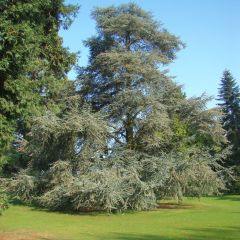
Cedrus libani subsp. atlantica Glauca - Blue Atlas Cedar
- Height at maturity 20 m
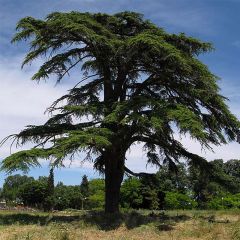
Cedrus libani - Lebanese Cedar
- Height at maturity 50 m
Low-growing variety

Cedrus libani atlantica Pendula - Lebanese Cedar
- Height at maturity 4 m
Discover other Cedar
View all →Available in 1 sizes
Available in 1 sizes
Available in 2 sizes
Available in 1 sizes
Available in 1 sizes
Available in 1 sizes
Available in 1 sizes
Available in 2 sizes
Available in 1 sizes
Available in 1 sizes
Planting a cedar
Where to plant?
Cedars are conifers resistant to urban pollution, although Cedrus libani is somewhat less so, and fairly hardy, tolerating frosts down to -15°C. There is however an increasing hardiness order as follows: deodara, atlantica then libani. They grow in zones 6 to 9 except deodara, limited to zones 7 to 9 (min. -16°C). The latter is also thought to be more sensitive to late frosts.
Cedars prefer fertile, deep, cool soils, but will tolerate much less favourable conditions provided soil is well-drained, and once established tolerate summer drought.
Choose a very sunny, open site sheltered from wind channels, and above all anticipate future development of this tree! It does not like being moved because its root system needs to anchor firmly in soil to cope with drought and wind.
When to plant?
Preferably plant from September to November or from February to June, especially in slightly heavy soils.
How to plant?
This plant is easy to grow if young specimens are planted. Choose a well-branched specimen with a balanced silhouette and a leading shoot to produce a large specimen.
- Soak rootballs thoroughly before planting by immersing pot in a bucket of water while you dig the hole.
- Dig a deep hole three times wider than the rootball and loosen soil around with fork tines. Avoid heavy, waterlogged ground in winter
- Add a few handfuls of sand and grit to ensure good drainage around roots.
- Add well-rotted manure or compost if soil is poor.
- Place the plant in the planting hole with 2 or 3 stakes driven deeply around the rootball.
- Replace the soil and firm lightly.
- If plant size is already substantial, tie trunk to stakes with soft ties.
- Form a basin and water generously.
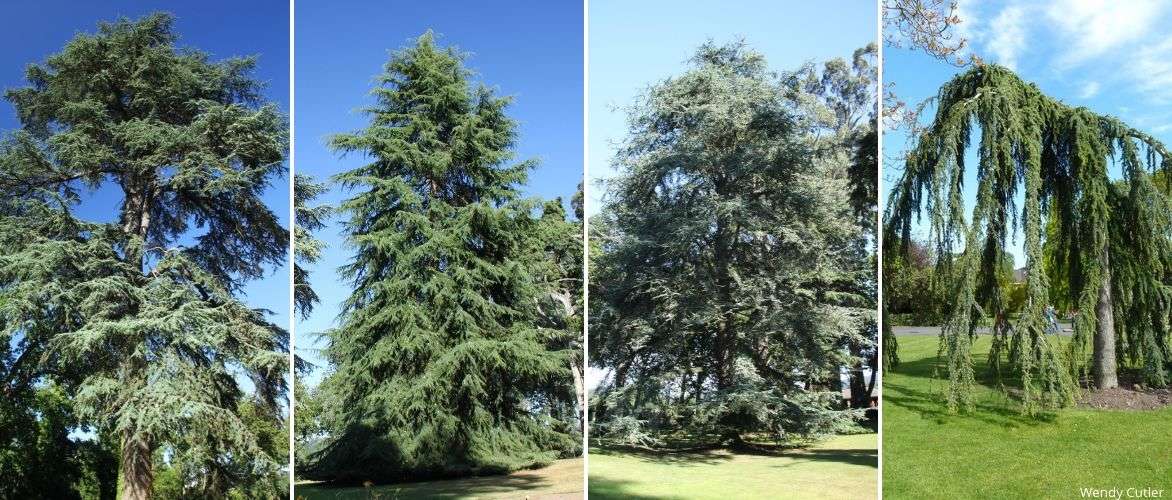
Some cedars: Cedrus libani, Cedrus deodara, Cedrus atlantica and Cedrus libani atlantica Pendula
Read also
How to choose a cedar well?Pruning and care
Pruning cedar
For cedars intended to become large specimens, simply gradually prune the lower branches flush with the trunk to the desired height, as lower branches that can obstruct passage do not always die back naturally. Then remove dead wood and small branches growing inside the crown to free the main branches and create “windows” to reduce windage. Work by a tree surgeon is often necessary on large specimens to thin the branches and prevent breakage. Remove suppressed (more horizontal) branches that are slow to be naturally pruned. If branches are torn off in a storm, cedar wood tolerates large cuts and heals well. Pruning can be carried out all year except during the bud burst period in spring.
Care
- Water generously for first years and during prolonged drought, and hoe the soil or mulch to retain moisture.
- Apply a “conifer” fertiliser in April if you want to speed up growth, which is only 3–4 m in 10 years for typical species, and less for golden or weeping forms.
- Protect young Himalayan cedars with horticultural fleece in case of late frosts.
Pests and possible diseases
Cedars are rarely affected by disease but can suffer sporadic attacks by processionary caterpillars, as occurs on pine. This pest is identified by large silky nests formed in the branches and by columns of blackish villous caterpillars. These moth larvae not only feed on the tree’s needles but also release urticating hairs at the slightest disturbance.
For full details, see this sheet: “Pine processionary caterpillar: dangers and control methods”
Black aphid and red spider mite can attack the needles. Wash them off with a jet of water.
Propagation
Most common propagation is sowing in late autumn or spring, for botany species and some blue‑foliaged forms. Grafting is practised on cultivars to preserve their character but this operation is specialist work. Rootstock can be one of the 3 species regardless of scion, except Cedrus libani ‘Glauca’ which requires Cedrus deodara as rootstock.
Sowing
Germination rate is only 30%. Seeds remain viable for up to 2 years when kept in dark, dry conditions.
- Collect seeds when cones begin to disintegrate on the tree, after 2 or 3 years of ripening.
- Stratify seeds by sowing in late autumn in a pot covered with fine mesh, or refrigerate for 1 to 2 months before spring sowing.
- Keep strongest young plants.
- Do not wait too long before transplanting young plants because cedar does not like its roots being disturbed.
Uses and associations
Cedar makes a beautiful solitary specimen, extending both in height and width to 5–10 m. Allow a large open space, a single large conifer is sufficient in a garden under 2,000 m. Blue cedar offers a spectacular autumn display when placed in front of leafy trees such as maples or liquidambars. Its silhouette and longevity also make it a highly valuable bonsai.
Cedrus deodara Aurea or golden Himalayan cedar is one of the most widely planted owing to its small footprint (3 m diameter and 8–10 m height at 20–25 years) and the brightness of its shoots, strikingly yellow turning yellow‑green in summer. ‘Kelly Gold’, with a slightly narrower, more compact habit, will cope better with sun.
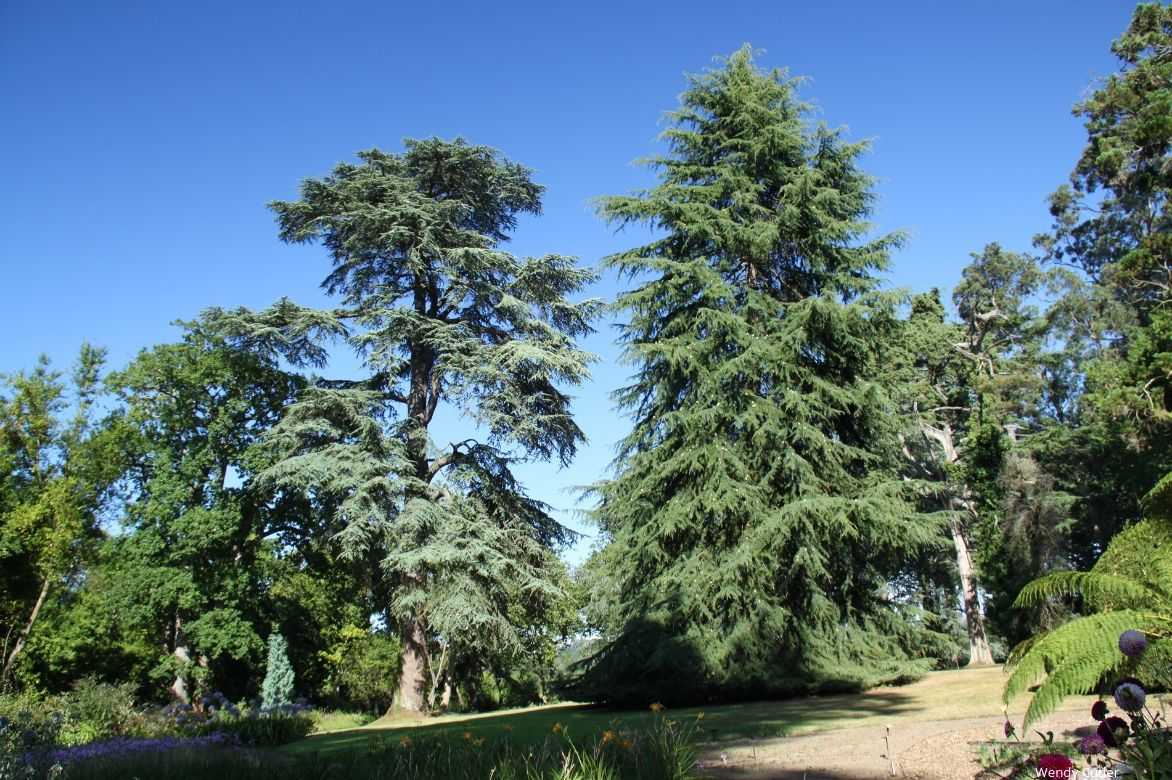
From left to right: Cedrus libani and Cedrus deodara
Beware Atlas weeping cedar which can exceed 15 m in diameter even though it has very slow growth. You can, however, train its long branches along strong supports and limit its spread with sensible pruning. It makes an exceptional specimen to place in isolation or, why not, by the edge of a pond where its image will be reflected in a highly romantic gesture. In this situation it plays the same ornamental role as a weeping willow while demanding far less from the soil. Indeed, Atlas cedar is not only very hardy but also capable of growing in poor, stony soils that dry out in summer.
In a very large garden you can also plant several specimens along an avenue leading to a grand residence. This planting will give the approach an entirely different dimension and a style that is both elegant and romantic. Space trees 7–10 m apart so they do not crowd each other later.
The true graphic qualities of dwarf cedars (Cedrus deodara ‘Golden Horizon’, Feelong Blue) or those trained as bonsais naturally suit contemporary garden design, which favours the aesthetics of form, silhouette and texture over the whirl of flowering. These lively plants, offering reassuring permanence, provide long‑lasting structure to a bed, define pathways and edge terraces, easily replacing the strong presence of clipped boxwood or holly. The key is to play with volumes and colours.
Create bold contrasts by pairing blue or golden cedar with azaleas (mollis group) in bright spring and autumn colours.
You can tuck pulmonarias or bulbs such as Naples cyclamen, squills or wood hyacinths at the base of large cedars to create a delightful surprise. Do not hesitate to plant a bed of perennials in the foreground to enliven the view from the house.
Did you know?
Although closer to home, Atlas cedar was not discovered until around 1830, whereas Cedar of Lebanon was described and introduced under Francis I by Pierre Belon between 1546 and 1549 during a diplomatic mission to Suleiman.
To go further
Discover our range of Cedars.
Our advice sheets: How to choose the right cedar and 10 conifers for a south-facing garden
- Subscribe!
- Contents
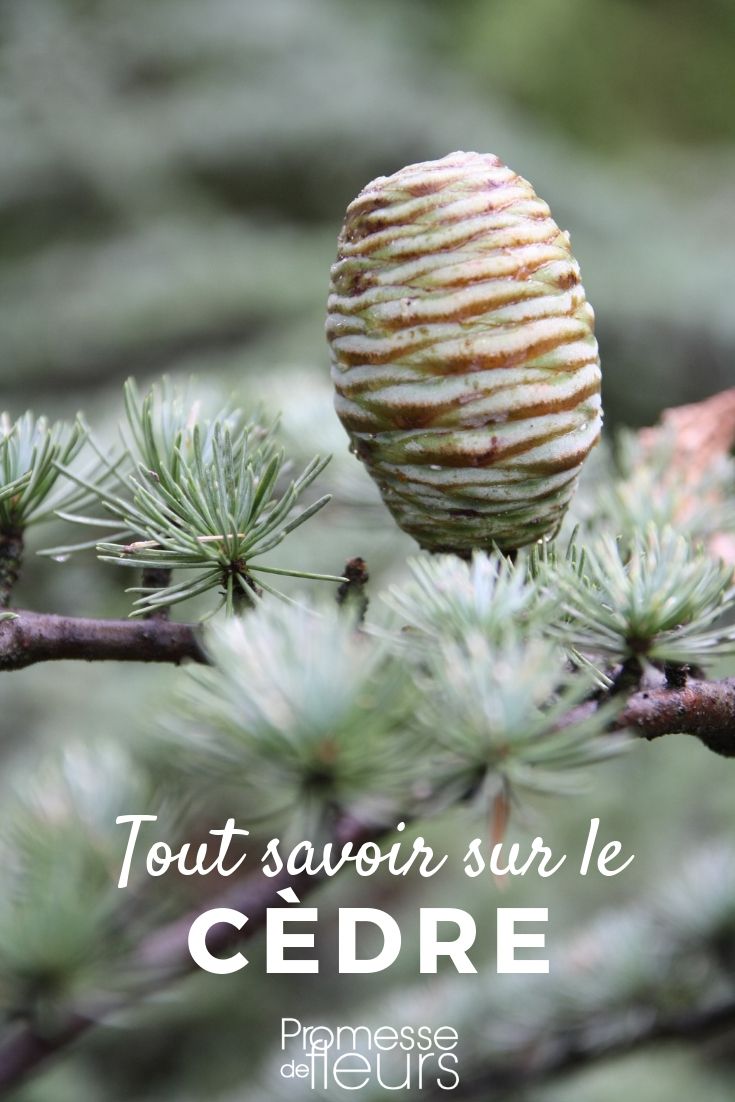































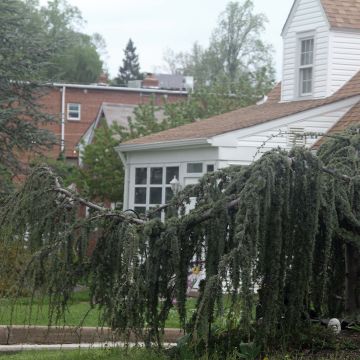

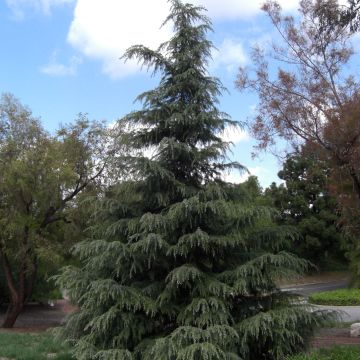
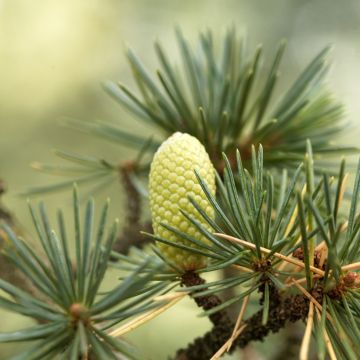
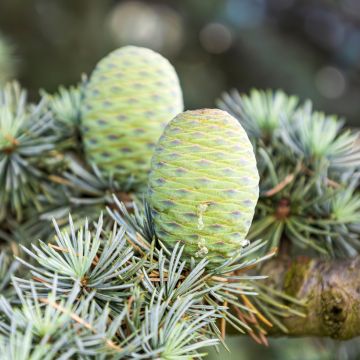
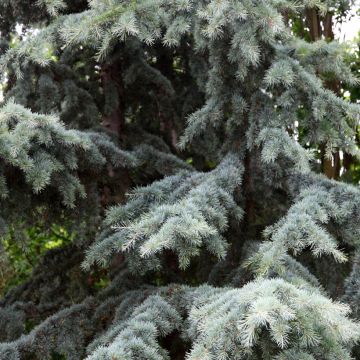


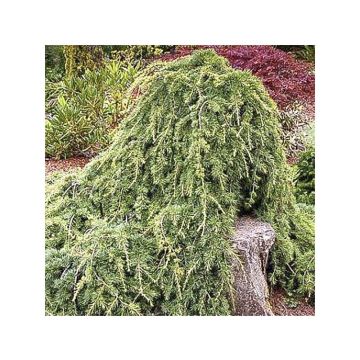
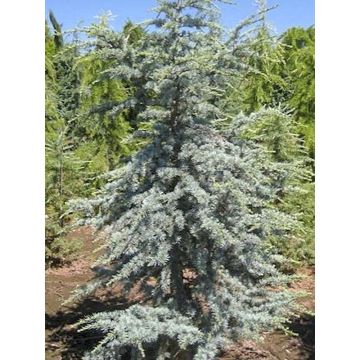
Comments